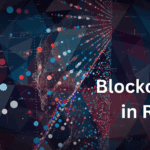Recently, the field of text-to-image generation has seen significant advancements due to the development of new neural network-based models, one of which is DALL-E. In this article, we provide a technical guide to text-to-image generation using DALL-E. We discuss the technical aspects of DALL-E, including text encoding, image generation, and fine-tuning & customization. We also explore the potential applications of this technology along with the challenges and limitations of DALL-E, followed by a discussion on potential solutions to address these challenges. The article concludes with a simple code demonstrating how to integrate DALL-E with Python.
Text-to-Image Generation
Text-to-image generation is the task of generating images from textual descriptions. The ability to generate realistic images from natural language text has been a longstanding goal in the field of machine learning and artificial intelligence.
Despite significant progress in recent years, text-to-image generation remains a challenging task due to the inherent complexity of translating textual information into visual content. Traditional approaches to text-to-image generation relied on hand-crafted rules and heuristics, which were limited in their ability to generate realistic and diverse images.
However, recent advances in deep learning have led to the development of more sophisticated models capable of generating high-quality images from textual descriptions. One such model is DALL-E, a neural network-based model developed by OpenAI.
DALL-E is a significant breakthrough in text-to-image generation, as it can create highly detailed and diverse images that closely match the input text. This model is trained on a large corpus of image-text pairs and can generate images that are not only semantically meaningful but also visually appealing. The development of DALL-E has the potential to revolutionize various industries, including e-commerce, gaming, and creative arts.
DALL-E Architecture
The architecture of DALL-E is based on the Transformer architecture, which is a type of neural network that has been widely used in natural language processing tasks.
The DALL-E architecture consists of two main components: the text encoder and the image decoder. The text encoder takes in a textual description as input and encodes it into a high-dimensional vector representation. The image decoder then takes the encoded text vector as input and generates a corresponding image.
DALL-E generates its images through a series of conditioning mechanisms that enable the model to incorporate textual information into the image generation process. These mechanisms include attention mechanisms, which allow the model to focus on different parts of the input text when generating specific parts of the image, and positional encoding, which encodes the position of words in the input text.
Compared to other text-to-image models, DALL-E has several advantages, including the good quality of images, the wide range of styles and formats it provides, and its high scalability, as it can be trained on large datasets with relatively little computational overhead.
Text Encoding
In DALL-E, text encoding is the process of transforming a textual description into a high-dimensional vector representation that can be used as input to the image decoder. This process is essential for generating the high-quality images the user asks for.
The text encoding process in DALL-E involves several steps, including tokenization, embedding, and positional encoding.
Tokenization:
The first step in text encoding is tokenization, which involves breaking the input text into individual words or subwords. This is achieved using a tokenization algorithm, which can vary depending on the specific requirements of the model.
In DALL-E, the GPT-3 language model is used for tokenization, which employs a subword tokenization algorithm that is optimized for natural language processing tasks. This algorithm breaks words into smaller subwords based on their frequency in a large corpus of text data and assigns each subword a unique token.
Embedding:
Once the input text has been tokenized, the next step is to map each token to a continuous vector representation using an embedding layer. The embedding layer is typically pre-trained on a large corpus of text data, such as Wikipedia or Common Crawl, to ensure that it captures the nuances and subtleties of natural language.
In DALL-E, the embedding layer is trained jointly with the rest of the model, which allows it to learn representations that are optimized for text-to-image generation. The embedding layer uses a combination of convolutional and transformer-based architectures, which enables it to capture both local and global features of the input text.
Positional Encoding:
In addition to tokenization and embedding, DALL-E also uses positional encoding to incorporate information about the order of words in the input text. Positional encoding involves adding a set of sinusoidal functions to the embedded representation of each word, with each function corresponding to a different frequency.
The purpose of positional encoding is to enable the model to encode the relative position of each word in the input text, which is important for generating images that, in a way, match the input description. Without positional encoding, the model would not be able to distinguish between two input descriptions that have the same words but in a different order.
Overall, the text encoding process in DALL-E is a critical component of the model’s architecture. It enables the model to understand the meaning and context of the input text and to generate images based on that.
Image Generation
DALL-E generates its images using a transformer-based generative model. The model consists of a stack of transformer decoder layers, similar to those used in GPT-3, which are trained to generate images that match the input text description. The image generation process is based on a two-stage approach, which involves generating a set of image tokens that are then decoded into a final image.
To generate the image tokens, DALL-E first converts the text input into a sequence of tokens using byte pair encoding (BPE), a type of subword tokenization that splits words into smaller units based on their frequency in the training data. The resulting token sequence is then fed into the model, along with a mask indicating which tokens correspond to the text input and which correspond to the image tokens.
During training, DALL-E learns to generate image tokens that are consistent with the input text description. To achieve this, the model is trained using a combination of supervised and unsupervised learning. Specifically, DALL-E is trained using a variant of the contrastive loss function, which encourages the model to generate similar image tokens for similar text descriptions, while also ensuring that the generated images are distinct from those generated for other descriptions.
Once the image tokens have been generated, they are passed through a decoder network that reconstructs the final image. The decoder network consists of a series of transposed convolutional layers, which upsample the image tokens into a spatial grid and combine them to generate a coherent image. The decoder is trained using a combination of L1 and adversarial losses, which encourage the generated image to be both visually similar to the input text description and realistic.
Fine-Tuning and Customization
DALL-E is a highly flexible model that can be fine-tuned to generate images for a wide range of use-cases. Fine-tuning involves taking a pre-trained DALL-E model and further training it on a specific task or dataset. This process allows the model to learn more specialized features that are relevant to the particular use-case, resulting in better image generation performance.
Fine-tuning DALL-E involves adjusting its many parameters to optimize for the desired output. This can include modifying the model’s architecture, adjusting the learning rate, changing the loss function, or adding additional layers. Fine-tuning can be done with relatively few examples and can significantly improve performance on a specific task.
The importance of fine-tuning cannot be overstated, as it is essential for achieving high-quality image generation results for some use-cases. For example, if you want to generate images of animals, fine-tuning DALL-E on a dataset of animal images can help it learn specific features such as fur, eyes, and body structure. Fine-tuning on a more general dataset, such as ImageNet, can also be helpful for many use-cases.
Fortunately, pre-trained DALL-E models are available for a range of use-cases, including animals, objects, and scenes. These pre-trained models can be fine-tuned on additional data or used as-is for specific image generation tasks. The availability of pre-trained models can save significant time and computational resources, as training a DALL-E model from scratch can be computationally expensive.
Overall, fine-tuning and customization are critical aspects of using DALL-E for text-to-image generation. These processes allow for highly specialized image generation for specific use-cases and enable the model to learn the most relevant features for a given task.
Applications
DALL-E has several potential applications in a variety of fields. Some of the specific applications of DALL-E are:
- Advertising: DALL-E can be used to generate images for advertisements and product packaging. For example, a clothing brand can use DALL-E to generate images of clothing items, without the need for a physical photoshoot.
- Graphic design: DALL-E can be used to generate unique and creative visuals for websites, social media, and print media. Designers can provide text descriptions of the desired visuals, and DALL-E can generate the images automatically.
- Video game development: DALL-E can be used to generate game assets such as characters, backgrounds, and objects. This can help game developers create more immersive game worlds in less time, and without the need for manual artwork.
- Healthcare: DALL-E can be used to generate medical images, which can be used to train medical professionals or assist in medical research.
DALL-E is a relatively new and unique model for text-to-image generation, but other generative models can also create images from text descriptions. Some of the other models include:
- GANs (Generative Adversarial Networks): GANs are a popular type of generative model that can be used for image generation. However, GANs require a large amount of training data and can be difficult to train.
- VQGAN (Vector Quantized Generative Adversarial Network): VQGAN is a generative model that uses vector quantization to generate images. It is similar to DALL-E in that it can generate images from text descriptions, but it is not specifically designed for this purpose, as it mostly has been used for image-to-image translation, and style transfer.
- CLIP (Contrastive Language-Image Pre-Training): CLIP is a model that can understand natural language and generate image embeddings. It can be used to generate images from text descriptions, but it does not have the same level of control over the image generation process as DALL-E.
Challenges and Limitations
DALL-E has demonstrated impressive results in text-to-image generation, but it also faces several challenges and limitations.
One significant challenge with DALL-E is that its generated images are considered low-quality compared to images captured by cameras or other generative models. The model’s limited scope means that it struggles with generating more abstract or complex ideas, which further limits the quality of the images it produces. Despite its impressive capabilities, DALL-E’s images may not meet the quality standards that many people expect from modern photography or other generative models.
Another challenge is the potential for bias in the model, particularly when using biased or problematic training data. For example, if the training data is biased towards certain races or genders, the generated images may reflect those biases in a harmful or uncalled-for way.
Varying levels of control over the generated images can also be a limitation. While DALL-E allows for precise control over certain attributes, such as the color of an object or the position of a character, it may be more challenging to control higher-level features such as emotions or actions.
Possible solutions to address these challenges and limitations include increasing the size and diversity of the training dataset, implementing measures to reduce bias in the model, and developing more efficient hardware solutions.
In terms of hardware, there have been recent advancements in the development of specialized hardware, such as Graphcore’s Intelligence Processing Unit (IPU) and Google’s Tensor Processing Units (TPUs), which could improve the speed and efficiency of generative models like DALL-E.
Overall, while DALL-E has shown great potential in generating high-quality images from textual input, there is still much work to be done to address these challenges and limitations and further advance the field of text-to-image generation.
Integrating DALL-E with Python
One way to use DALL-E is through the website where you can input text prompts and receive corresponding image outputs. However, there are times when you may want to integrate DALL-E with Python to build applications such as chatbots, image editors, or image search engines. Integrating DALL-E with Python allows you to use the model’s powerful image generation capabilities programmatically and integrate it into your existing workflows.
Fortunately, integrating DALL-E with Python is straightforward and can be done using OpenAI’s official API. This API provides access to DALL-E’s image generation capabilities through a simple RESTful API, making it easy to use in Python scripts or applications.
Here is how to interact with OpenAI’s API, step by step:
- Create an OpenAI account: To use OpenAI’s API and integrate DALL-E with Python, you must first create an account on the OpenAI website. The account creation process is straightforward and free of charge.
- Generate a Secret Key: After logging into your OpenAI account, navigate to the “View API keys” option in the drop-down menu, which can be accessed by clicking on your profile icon located in the top right corner of the screen. From there, you can generate a secret key that will allow you to authenticate your API requests and access DALL-E’s image-generation capabilities. Keep this secret key in a secure location as it grants access to your OpenAI account and API usage.
- Download “openai” library: We need “openai” library to use the API.
Once we have completed the steps to set up our OpenAI account and obtain our secret key, we can begin generating DALL-E images in Python. To get started, we need to import the “openai” library and set our API key to the secret key we generated earlier.
| secret_key=“sk-YaN…rqUe” import openai openai.api_key=secret_key |
It is time to generate our first images!
| openai.Image.create( prompt=“Two scorpions fighting on a street”, n=3, size=“1024×1024” ) |
The code snippet provided is an example of how to generate DALL-E images using the OpenAI API in Python. The “openai.Image.create()” function is used to send a request to the API to generate images based on the provided prompt.
In this example, the prompt is set to “Two scorpions fighting on a street”. The “n” parameter specifies the number of images to generate, and the “size” parameter sets the dimensions of the generated images. In this case, the size is set to 1024×1024 pixels.
The output is three URLs, each representing a different image of the prompt we used in the code. Here are the images we got:
It is worth noting that the DALL-E model is still in development, and its image generation capabilities may not always be perfect or accurate. Therefore, it is recommended to test and evaluate the generated images before using them in a production environment.
Final Words
In conclusion, DALL-E is a revolutionary deep learning model that has made significant strides in the field of text-to-image generation. Its ability to generate high-quality images from scratch using nothing but text input has tremendous potential for various applications.
This article has discussed the architecture and functioning of DALL-E, including the role of text encoding and the training process for image generation. Additionally, we have explored the possibilities of fine-tuning and customization of pre-trained models, potential applications, and the limitations of DALL-E. The article concludes with a code that shows a simple way to integrate DALL-E with python, by using the OpenAI API.
Finally, DALL-E is an exciting development in the field of deep learning, and further research is needed to explore its full potential. Future directions for research may include extending DALL-E to generate videos or exploring the use of reinforcement learning for better image generation.



